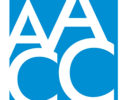Report roundup
By AACC 21st Century Center Staff
September 21, 2023
Here are three reports to know about this month:
Leadership transitions
The rate of transitions among community colleges’ top leaders has slowed since its peak seven years ago, but that may change within the next few years as a wave of presidents reach retirement age, according to a new report from the American Association of Community Colleges (AACC). Until the 2016-17 academic year, the CEO transition rate was increasing. Since then it has steadily dropped, down to 8.3% in 2021-22 and 8.8% in 2022-23. The report notes that the onset of the Covid pandemic in 2020 prompted a number of CEOs with plans to retire to postpone them and help their institutions through the crisis. But data show that CEO transitions may be increasing again, as more baby boomer and Gen X CEOs retire, and younger leaders assume the top posts.
High school benchmarks
While the rate of students enrolling in college immediately after graduating high school is increasing, that’s not the case for the Class of 2020, whose college-going plans were significantly thwarted by the pandemic, according to a new report from National Student Clearinghouse Research Center. Only 0.7% of 2020 high school graduates who didn’t go immediately to college that fall had their first fall enrollment in 2021, and even fewer (0.2%) in fall 2022. Those who did enroll in the following two years tended to favor community colleges. In 2020, graduating seniors who immediately went to college enrolled largely at public four-year institutions (47.7%), but students who delayed enrollment mostly attended community college — 58.5% and 63.5% of those enrolling in fall 2021 and fall 2022, respectively.
Supporting immigrant students
Nearly a third of all community college students are immigrants and “these institutions face substantial hurdles in supporting this population at all skill levels, with limited research on effective programs and interventions that bridge disparities,” says a report from Upwardly Global. The report includes information from stakeholder interviews and in-depth focus groups with community college practitioners across California and Texas, as well as national survey data from more than 80 college practitioners. Nearly 80% of respondents said their community college needs to improve their capacity in meeting the specific needs of immigrant and refugee students. The report suggests “a collaborative ecosystem approach involving community colleges, workforce agencies, and community-based organizations is key.”



